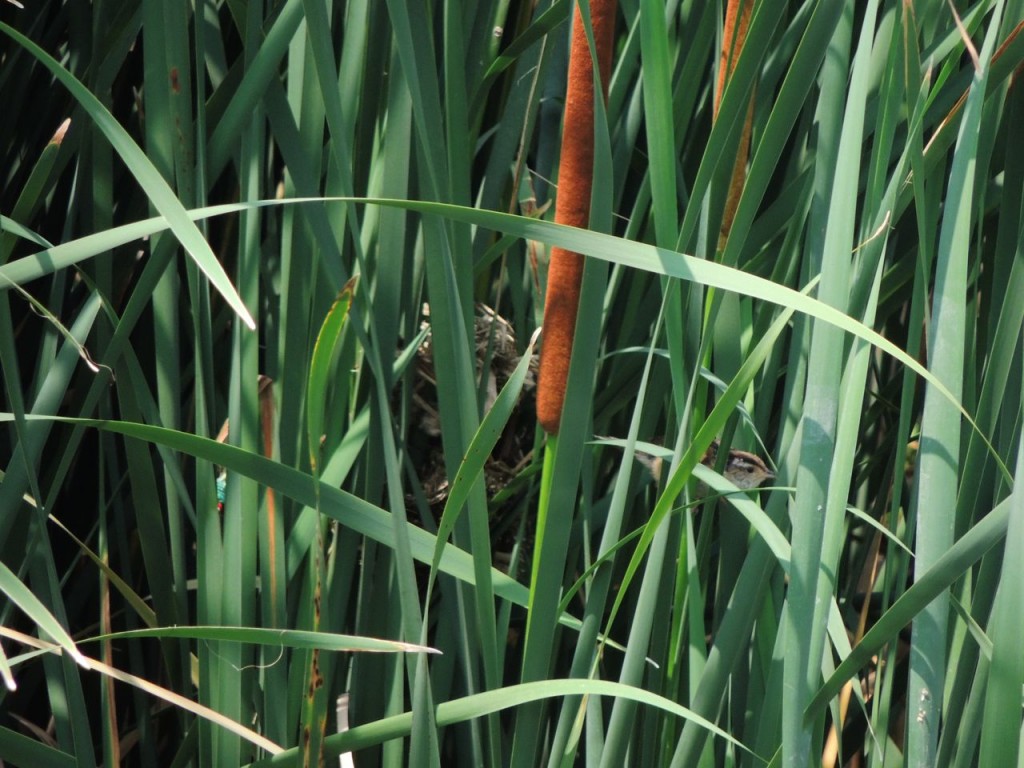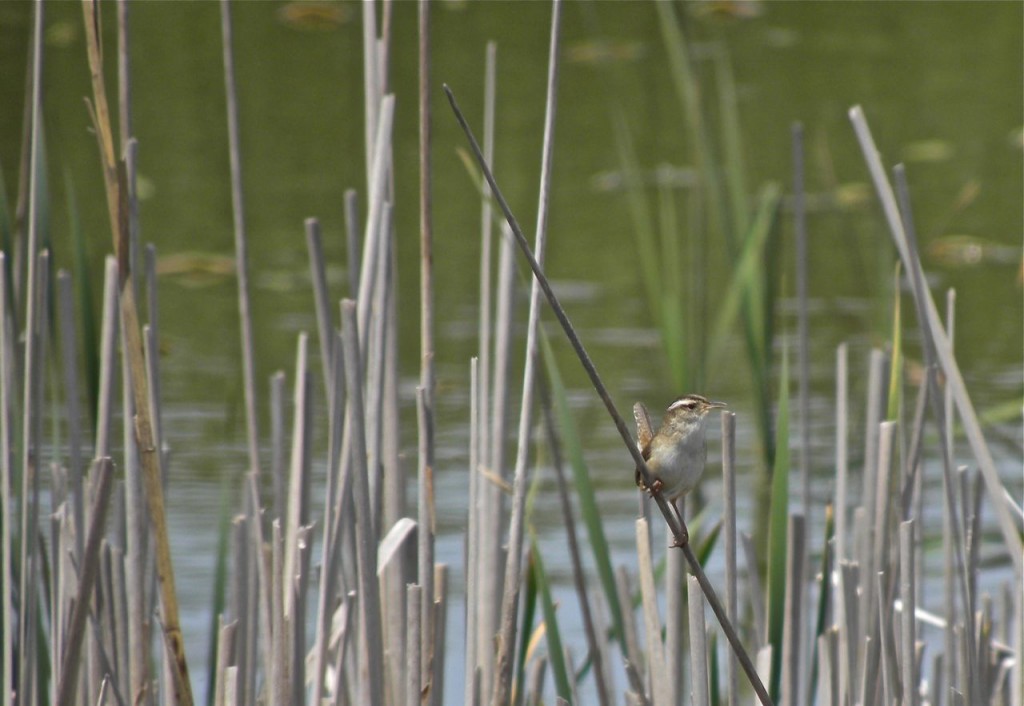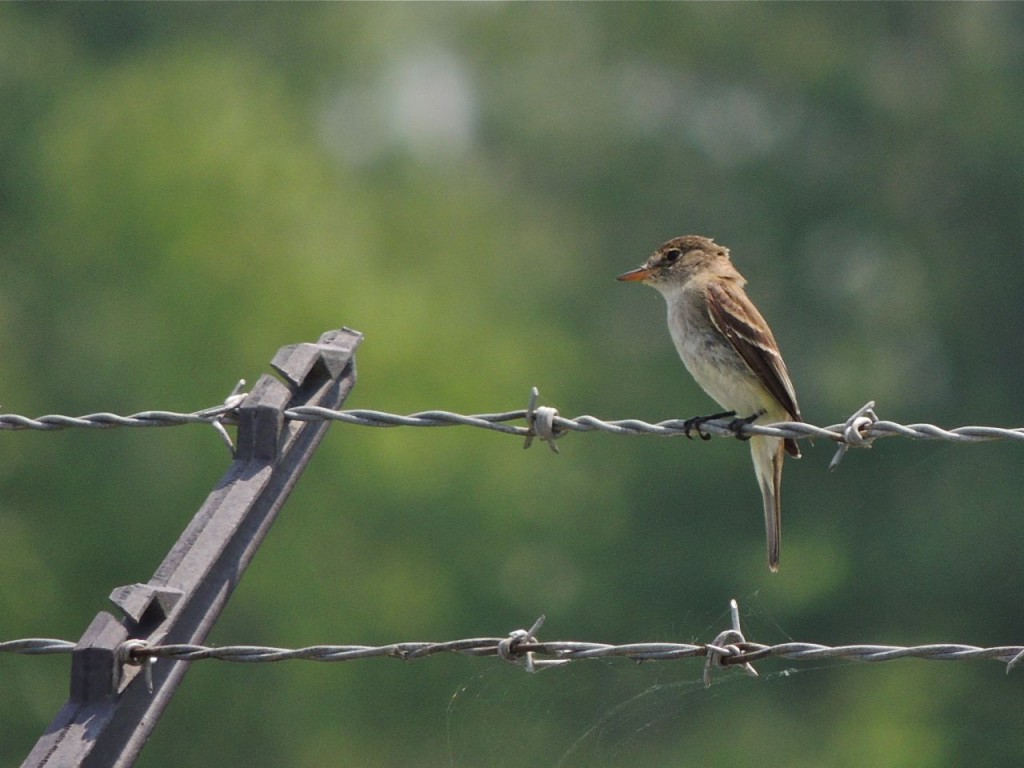21 July 2014 Port Maitland, ON. With the exception of evaporation and a trivial leakage at Chicago, all of the waters of the Great Lakes Basin (Lakes Superior, Michigan, Huron and Erie) eventually flow down the Niagara River where, to the endless amusement of mankind, they careen over Niagara Falls before reaching Lake Ontario, the last of the Great Lakes. The cataract, while very dramatic, was always an impossible impediment to commercial shipping – and it remained so until men thought to dig around it creating canals with lift-locks. As ships grew in size, so the early canals became obsolete and were abandoned. Traces of those early canals remain, overlooked, taken for granted and often little more than a wide ditch choked with cattails and water lilies; good bird habitat.
Walking beside the headwaters of one of these old canals, I heard the short, clockwork rattle of a Marsh Wren coming from a small stand of cattails. There were other birds around too: a Belted Kingfisher, an anxious Willow Flycatcher and families of Wood Ducks. Continuing along, I saw and heard several more Marsh Wrens and was really pleased to have found an apparently vigorous population. Marsh Wrens seem to be increasingly scarce; in at least two previously known locations I haven’t seen or heard them for a couple of years; I’m uneasy about the species’ future.
But where Marsh Wrens are to be found, it’s not difficult to find their nests, they’re always bulky bundles of intertwined reeds woven around supporting cattail stems, several feet above water level and often at our eye level. I watched an adult who appeared to be carrying food for young, visit one such nest repeatedly. The longer I watched the more I began to suspect that it was a single parent until, on one of its visits, I noted that it was carrying a large beak-full of fluff of some kind, but certainly not food. That was a surprise! Could it be that I was watching nest-building? In late July?

With some follow-up reading, I learned that Marsh Wrens are known for polygyny, with over half of males attracting more than one female. They also build dummy nests for no apparent reason. (In one study a male was observed building twenty-two of them.) This is not the place for a review of the very large topic of wren behaviour, but I think that what I was watching was a male building a dummy nest. Maybe he thought he’d prove his worthiness as a mate to watching females. It leaves me wondering though if, somewhere nearby, one or more females were watching in exasperation hoping that he’d help out with the kids at home instead of embarking on yet another pointless construction project. I’ll never know, but it was interesting to watch and, on this hot summer day, he was easily my Bird of the Day.

